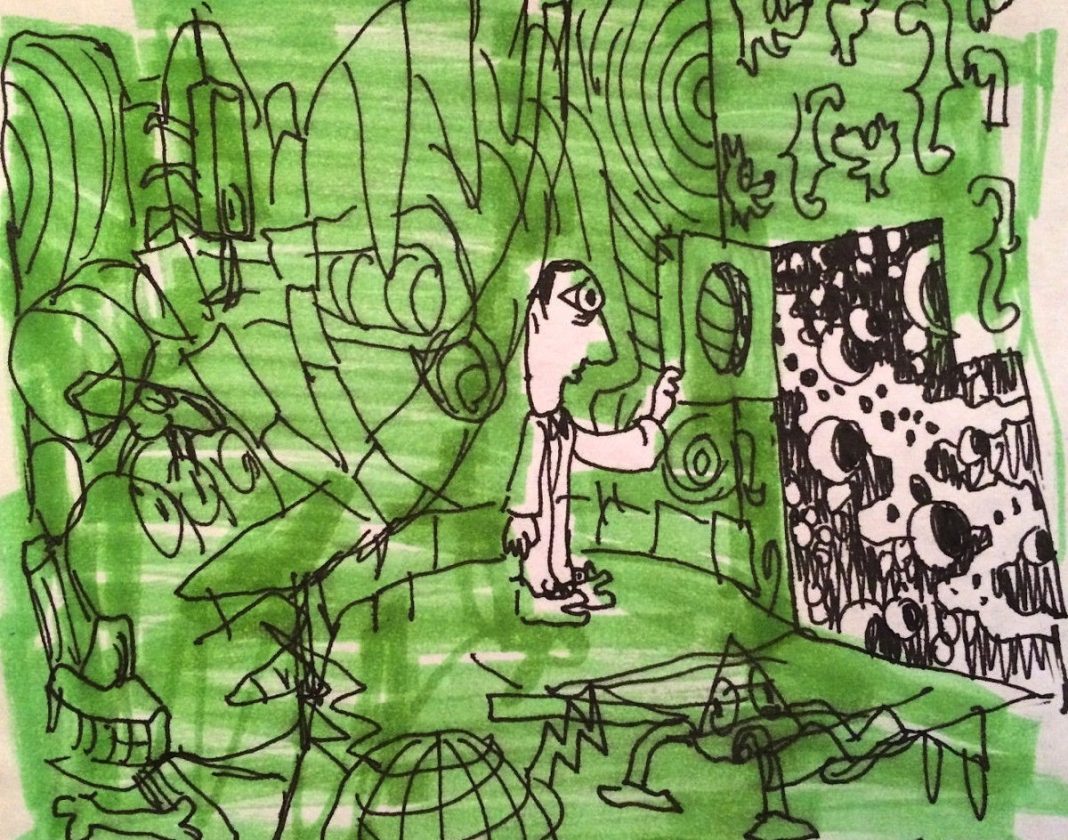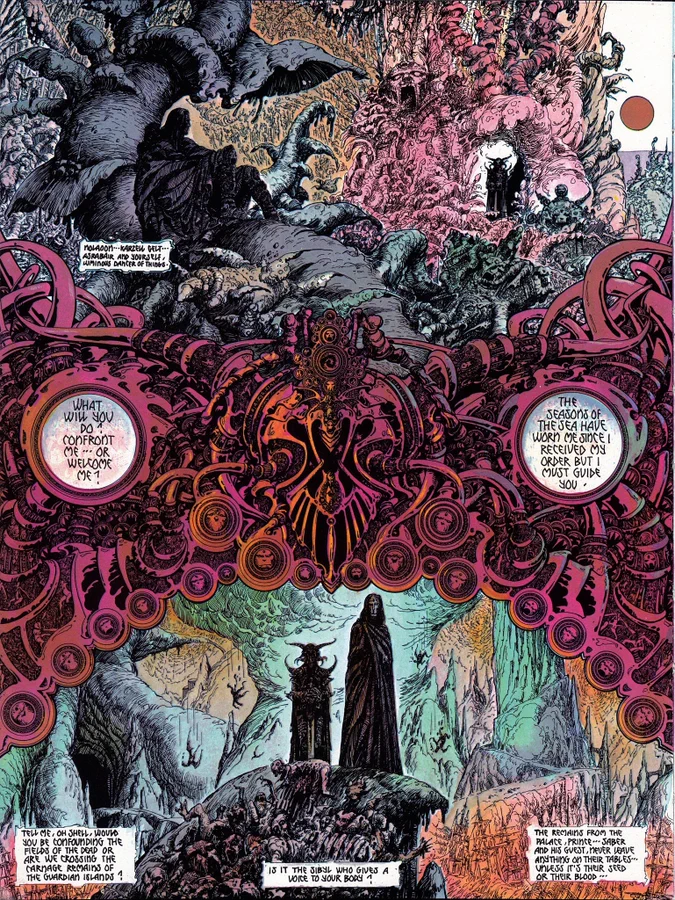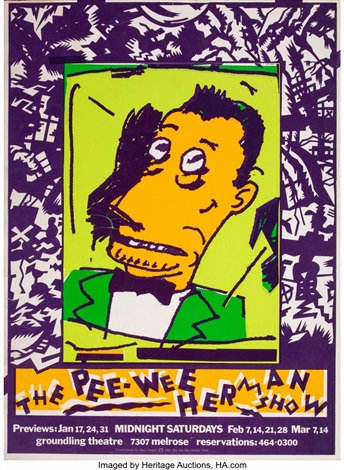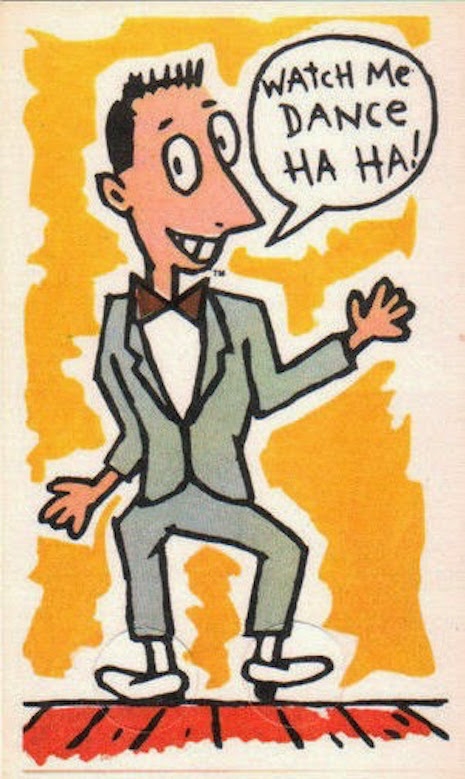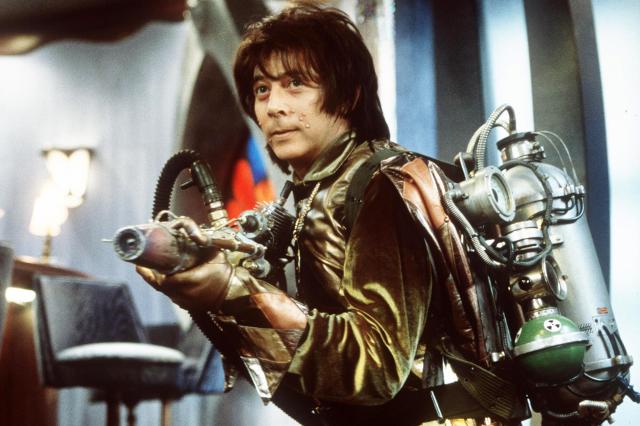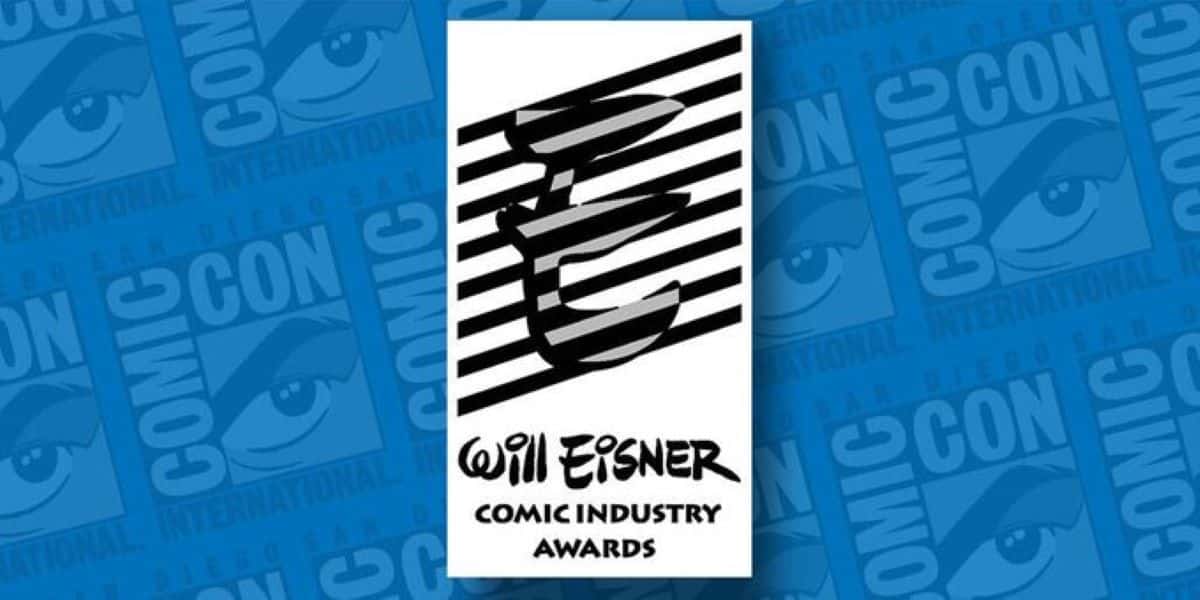§ Nice Art: Phillipe Druillet. Nuff said. (Druillet is a French master, best known for helping found Metal Hurlant and his Lone Sloane series.)
I get most of my “nice art” images from Twitter. I guess I won’t be doing that much longer. The news that Elon Musk Will Train His AI Project Using Your Tweets has people leaving in even more droves than ever. I’m downloading my archive (I hope?) as I write this. As for what will replace it…BlueSky seems to be the platform of choice for comics folks this far, but you can’t embed a skeet yet and posts are still private. Meta needs to do a lot of work on Threads before it really works and Mastodon…hurm.
That said, WordPress now connects directly to Mastodon and you can follow Beat postings at the ComicsBeat account there.
§ Also sad, the passing of Paul “Pee-Wee Herman” Reubens. Twitter (sorry) and other social media have been full of accounts of his astonishing kindness and decency. Really amazing how this man touched so many. And I don’t need to tell you what a huge influence Pee-Wee’s Playhouse was on GenXers.
Despite Reubens seeming like the sort of personality who would have some strong comic-book connection, these are mostly in who he worked with. Most famously, punk cartoonist Gary Panter was the art director for Pee-Wee’s Playhouse, working with Wayne White and Ric Heitzman. You can see some of Panter’s drawings for the show here, although I think they are cribbed from a book. Panter also co-wrote the first script for Pee-Wee’s Big Adventure, although it didn’t make it to the filmed version. Mimi Pond also wrote an episode of Playhouse.
Cartoonist Mark Newgarden worked on the Topps Pee-Wee card set, and some of those are collected here.
And of course, Reubens played The Spleen in Mystery Men, the way too far ahead of its time superhero spoof that featured all the essential GenX stars. We did a rewatch of that for Comic Beat Insider.
RIP, Paul. You made the world better
§ News! The School of Visual Arts has changed the names of some of its departments, including the cartooning program, which will henceforth be known as BFA Comics.
Also at the undergraduate level, BFA Cartooning will change to BFA Comics, an update that more accurately and competitively reflects the success of the program’s alumni and faculty in the dynamic universe of the comics industry. To inform the decision, program chair Viktor Koen—also chair of BFA Illustration—looked to the industry’s publications, conferences and festivals, analysis-driven academic symposiums, independent events like MoCCA or SPX, the big Comic-Cons in San Diego and New York, and the plethora of smaller, grassroots comic book events.
“One easily realizes that comics—other than a powerful industry with some of the most devoted fans—has established itself as a deeply respected language of sequential expression, art discipline, field of study and career,” said Koen.
§ Good news! The Queens College Graduate School of Library and Information Studies has been given a grant to work with Manga in Libraries on a “three-year research project to understand why BIPOC teens read manga (Japanese comics).” I won’t link to the stories, but this grant has shown up on a few right wing sites that complain about government spending, and there’s a hint of outrage about the “nerd menace,” as it might be called. With book bannings so widespread, it has always amused me that the anti-literacy forces haven’t focused on manga quite yet, but clearly there’s always room for more attempted censorship.
§ CBR rounds up the 10 Most Important Eisner Award Winners. No idea why these were important, but they were all good. I hear things are pretty dire at Valnet, the parent company of CBR and many other similar sites with even more budget cuts and attempts at replacing humans with AI.
§ Speaking of comics media, some changes at ComicsXF, with Zack Jenkins stepping away and Dan Grote staying on. They’ve also launched a new Patreon, which we urge you to support, because it’s the only way to keep comics coverage going that isn’t written by AI.
§ Speaking of Eisners, the main site has a list of the Eisner Retailer Award short and long list, but I wish they would put up the videos that each store submitted! I saw these at a screening at SDCC and they were so inspiring and show how passionate comics shop owners can be.
§ Also on the subject of awards, there was a skeet which I’ll have to anonymously paraphrase, but it was lamenting that even winning a major comics award doesn’t mean the creator will suddenly make money…or that the book will even stay in print. I feel that winning a major mainstream awards like the LA Time Book Prize, or a library award, tends to put a book on the library radar, and lead to sales, but Eisners, Harveys, Ringos and Ignatzes have less impact.
§ Libraries. They’re great are’t they? Support them! There’s some good news out there.
§ Little bits of SDCC news still filtering out, including the fact that the show led to increased use of those “bird scooters”, although not as much as during Pride Weekend.
During San Diego Comic-Con, which ran from July 20 through July 23, Bird ridership saw a more than 75% lift in rides in neighborhoods surrounding the convention, including Little Italy, Gaslamp, and the East Village. Convention goers used Bird scooters to replace short distance car trips to get around as evidenced by the increase in rides per user, up from 1.7 rides to 2.
§ I feel like you’d have to be insane to go to a con the weekend after SDCC, but there were some big shows last weekend, GalaxyCon Raleigh and Terrificon, which has a thorough write up at Conskipper.
What sets Terrificon apart from other conventions is its emphasis on comic books and comic book creators. This is a show for people who collect comics, love comic book art and storylines, and know the writers and artists who brought them to life. Terrificon’s artist guest list is always impressive and this year was no different. They brought in Arthur Adams for his first appearance in Connecticut ever, and they also featured Chris Claremont as their guest of honor. Between Garth Ennis, David Finch, Walt and Louise Simonson and more, the show was really a “who’s who” of the industry’s past, present, and future. This wasn’t just a delight for fans… we overheard multiple talented creators greet each other with statements like, “Didn’t I tell you this is the show to go to!?” Word seems to be spreading among the comic book world that Terrificon makes comics and their creators the main event!
Of note, most of those folks didn’t go to SDCC, so they were fresh. I’ve always wanted to go to Terrificon, but I’d need at least a weekend to recover.
§ Ritesh Babu on The Good Asian #1 at Shelfdust, no pull quotes – just read it.
§ Johanna Draper Carlson reports that Pow Pow Press is now being distributed by Lunar.
Pow Pow Press is a small publisher out of Canada with the goal “to make the work of Québec cartoonists available to an English-speaking audience in both Canada and the United States.” Along those lines, their graphic novels will be easily available in the US comic book direct market (comic shops) for the first time through Lunar Distribution this fall.
§ Brian Cronin looks at Manhunter, a great comic that was just a back-up feature.
As comic book page counts got smaller and smaller over the years, though, the page reduction led to a reduced amount of backup features, although DC briefly had a period in the early 1970s when EVERY comic had at least one reprinted backup story in it. By 1973, the standard format was either one main feature of 20 pages, or a split between two features to reach ROUGHLY that same amount of story pages (sometimes it would go up to 22 or 23 pages). In 1973, Archie Goodwin took over editing duties on Detective Comics, which was in a sales lull at the time. Goodwin knew he couldn’t make major changes to the main Batman feature, so he instead decided to come up with a new backup feature that they could spotlight.
§ Wholesome: Comic Creators joined the WGA picket line, and THR was there to report on it.
About 40 or so creators (some WGA members, some not) joined the proceedings at one of the gates outside of NBCUniversal on Lankershim Boulevard, with writers such as Eisner winner Pornsak Pichetshote (The Good Asian), Marc Bernardin (Adora and the Distance, Picard), Jeremy Adams (Green Lantern), David Avallone (Elvira), Emmy winners Shawna and Julie Benson (Batgirls and the Birds of Prey), and Lucifer showrunner Joe Henderson (Skyward). Rantz Hoseley, the Eisner-winning editor in chief of Z2 comics and independent filmmaker, organized the gathering.
§ Artist Yoshi Yoshitani submitted a Harley Quinn cover that was deemed too saucy, so Yoshitani made a TikTok about it.
After being asked to change her artwork for issue one of Harley Quinn: The Animated Series: Legion of Bats!, Yoshi Yoshitani took to TikTok to express some confusion. (And also to remind folks that there are prints available of the original issue artwork on Yoshitani’s online store.) Apparently DC Comics thought Yoshitani’s work, which features Harley and Ivy embracing and sharing a tender little neck kissing, was too “salacious.” As you can see in the video above, the image is hot but relatively tame.
§ The NY Times’ George Gustines reports on The Complicated Estates of Obsessive Collectors – or what to do with your deceased loved one’s baseball cards?
Most people tend to know what to do with traditional investments after someone dies, he said, but when it comes to baseball cards, first-edition books, coins and other collectibles, the loved ones dealing with the estate can be stumped (and annoyed). If some collectors of, say, vinyl figurines, seem to have a gene that spurs them to dedicate entire rooms of their home to inanimate rubbery friends, they are also, in many ways, just like everyone else. “People don’t want to think about dying,” said Maggie Thompson, 80, a former senior editor of Comic Buyer’s Guide, which was a newsmagazine that covered the comic book industry. “I realize as I look around my rooms, my family is not going to know what things are.”
§ This is an old link, but the Times also provided a kind of interactive look at manga translation and it’s really interesting and well done. Also factual! They call balloons balloons and not bubbles and (from my frame of reference) got everything right. Amazing!
SINCE MANGA WAS FIRST introduced to the U.S. in the 1980s, American companies have wrestled with how to adapt the genre for their readers. It requires taking into account not only art and visual concepts that are unique to Japanese, but also an entirely different system of reading. Today manga is enormously popular in the U.S. and is published in something close to its original form: in black and white, on inexpensive paper stock, to be read in the Japanese style. But this wasn’t always the case.
§ Headline of the day: How a comic book legend avoided that sinking feeling. OMG what on earth will this story be about????? Ah ha. Area man prefers private bathroom.
COATBRIDGE comic book writer Mark Millar is a superstar of the medium who is involved in producing movie versions of his stories. He also has a megabucks contract with streaming service Netflix. But being a sensible Scottish lad, he retains some homely habits, as he admits on social media. “First time I’ve done the London sleeper since they revamped it,” he reveals, “and delighted to see every room has a personal toilet as this saves me peeing in the sink and feeling bad about it.”


